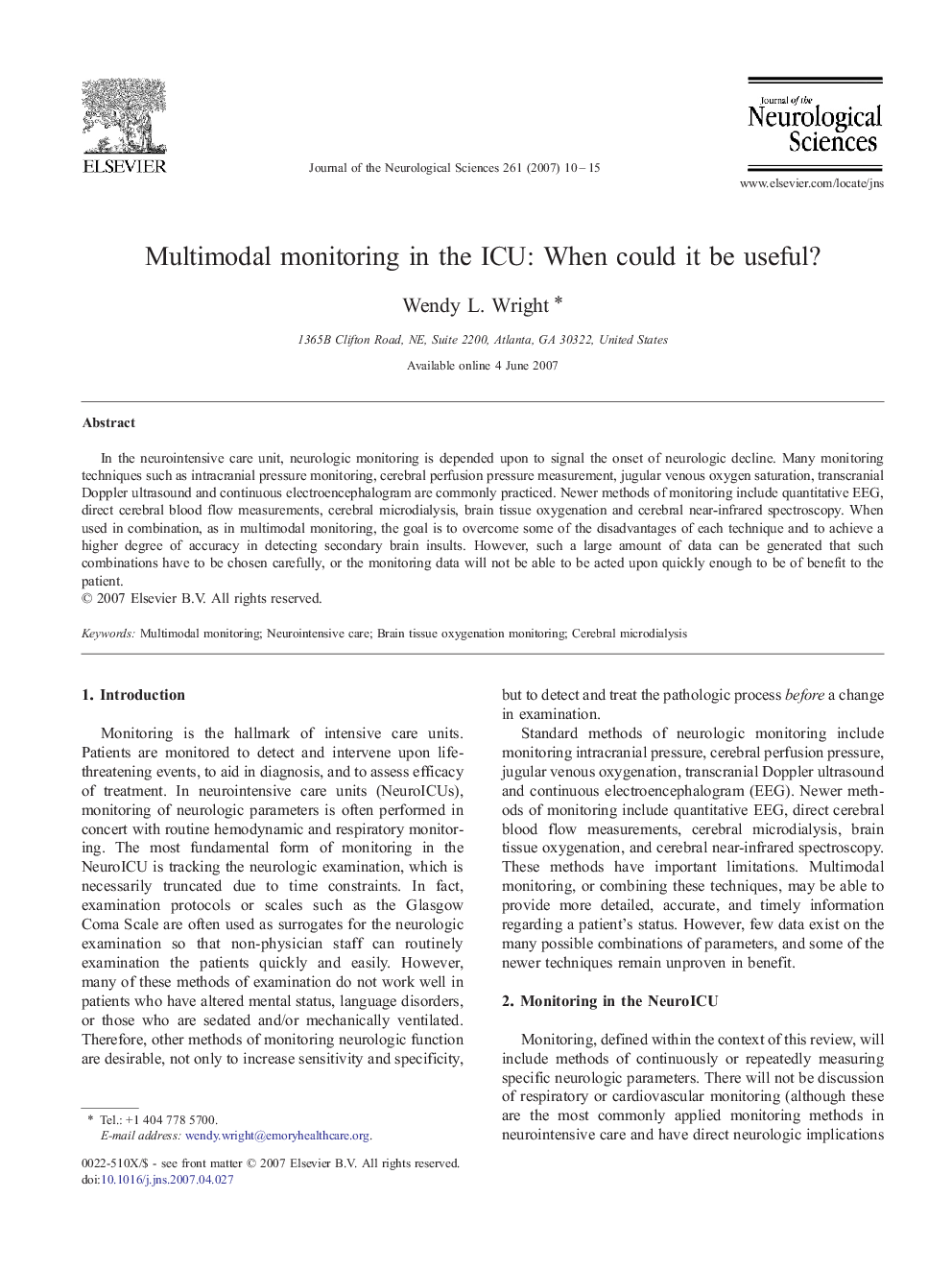| Article ID | Journal | Published Year | Pages | File Type |
|---|---|---|---|---|
| 1916010 | Journal of the Neurological Sciences | 2007 | 6 Pages |
In the neurointensive care unit, neurologic monitoring is depended upon to signal the onset of neurologic decline. Many monitoring techniques such as intracranial pressure monitoring, cerebral perfusion pressure measurement, jugular venous oxygen saturation, transcranial Doppler ultrasound and continuous electroencephalogram are commonly practiced. Newer methods of monitoring include quantitative EEG, direct cerebral blood flow measurements, cerebral microdialysis, brain tissue oxygenation and cerebral near-infrared spectroscopy. When used in combination, as in multimodal monitoring, the goal is to overcome some of the disadvantages of each technique and to achieve a higher degree of accuracy in detecting secondary brain insults. However, such a large amount of data can be generated that such combinations have to be chosen carefully, or the monitoring data will not be able to be acted upon quickly enough to be of benefit to the patient.
